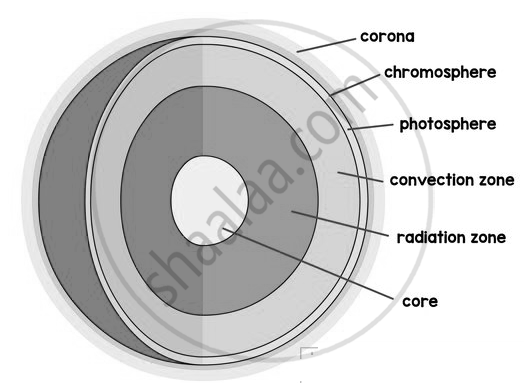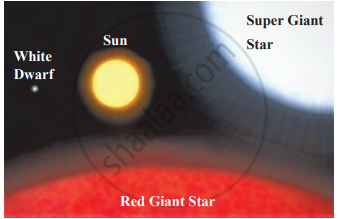Topics
Living World and Classification of Microbes
Health and Diseases
Force and Pressure
- Force
- Types of Force: Contact Force
- Types of Force: Non-Contact Force
- Balanced and Unbalanced Forces
- Inertia and Mass
- Types of Inertia
- Thrust and Pressure
- Pressure on Solids
- Pressure of liquid
- Gas Pressure
- Atmospheric Pressure
- Buoyancy Force (Upthrust Force)
- Archimedes Principle
- Density of substance and Relative density
Current Electricity and Magnetism
Inside the Atom
Composition of Matter
- Matter (Substance)
- Characteristics of Particles (Molecules) of Matter
- States of Matter
- The Solid State
- The Liquid State
- The Gaseous State
- Elements
- Types of Element: Metals
- Types of Element: Non-metal
- Type of Element: Metalloid
- Compound
- Types of Compound
- Mixture
- Types of Mixtures
- Solution
- Suspension Solution
- Colloidal Solution
- Molecular Formula of Compounds
- Valency
Metals and Nonmetals
- Types of Element: Metals
- Physical Properties of Metals
- Chemical Properties of Metal
- Types of Element: Non-metal
- Physical Properties of Non-metal
- Types of Element: Non-metal
- Chemical Properties of Non-metal
- Type of Element: Metalloid
- Uses of metals and nonmetals
- Nobel Metal
- Purity of Gold
- Corrosion of Metals
- Alloy
Pollution
- Pollution and Its Types
- Air Pollution and Its Causes
- Effects of Air Pollution
- Prevention of Air Pollution
- Water Pollution and Its Causes
- Effects of Water Pollution
- Prevention of Water Pollution
- Soil Pollution and its Causes
- Effects of Soil Pollution
- Prevention of Soil Pollution
- Relationship of Soil Pollution with Air and Water Pollution
- Laws for Control, Regulation, and Prevention of Pollution by Indian Government
Disaster Management
Cell and Cell Organelles
- Cell: Structural and Functional Unit of Life
- Prokaryotic and Eukaryotic Cell
- Plant Cell and Animal Cell
- Structure of the Cell
- Cell Wall - “Supporter and Protector”
- Plasma Membrane
- Cytoplasm - “Area of Movement”
- Nucleus - “Brain” of the Cell
- Endoplasmic Reticulum (ER)
- Golgi Apparatus - "The delivery system of the cell"
- Lysosome - “Suicidal Bag”
- Mitochondria - “Power House of the Cell”
- Plastids
- Non-living Substances Or Cell Inclusion
Human Body and Organ System
- Human Body
- Human Organ System
- Mechanism of respiration-Breathing
- Human Respiratory System
- Blood Circulatory System in Human
- Human Heart
- Blood Vessels
- Circulation of Blood in the Heart (Functioning of Heart)
- Heart Beat - Heart Sounds "LUBB" and "DUP"
- Blood
- Composition of Blood: Plasma (The Liquid Portion of Blood)
- Composition of Blood: Red Blood Cells (Erythrocytes)
- Composition of Blood: White Blood Cells (Leukocytes)
- Composition of Blood: Blood Platelets (Thrombocytes)
- Functions of Blood
- Blood Transfusion and Blood Groups (ABO and Rh system)
- Blood Pressure (B.P.)
- Heart Related Conditions
Introduction to Acid and Base
Chemical Change and Chemical Bond
Measurement and Effects of Heat
Sound
Reflection of Light
Man Made Materials
Ecosystems
Life Cycle of Stars
- Introduction of the Sun
- Properties of the Sun
Introduction of the Sun:
The Sun is the centre of our solar system and the most significant source of energy for life on Earth. It is a massive, nearly perfect sphere of hot plasma, primarily composed of hydrogen and helium. With a diameter of about 1.39 million kilometres, the Sun is approximately 109 times the size of Earth and accounts for about 99.86% of the total mass of the solar system. Its immense gravitational force keeps the planets, moons, asteroids, and comets in their orbits.
The Sun is classified as a G-type main-sequence star (G2V), commonly known as a yellow dwarf. It is an average-sized star compared to the billions of stars in the universe, yet its proximity to Earth (approximately 150 million kilometres or 93 million miles) makes it appear much larger and brighter than other stars in the sky. This distance is known as an Astronomical Unit (AU) and serves as a fundamental measurement in astronomy.

The Sun
Properties of the Sun:
1. Energy Production: At the core of the Sun, nuclear fusion occurs, where hydrogen atoms are converted into helium. This process releases an enormous amount of energy in the form of light and heat, sustaining life on Earth and driving the planet's weather and climate systems.
2. Surface and Layers:
- Core: The innermost region where nuclear fusion occurs, reaching temperatures of about 15 million Kelvin.
- Radiative Zone: Energy travels outward in the form of radiation.
- Convective Zone: Hot plasma rises and falls, creating convection currents.
- Photosphere: The visible surface of the Sun, with temperatures around 5,800 Kelvin.
- Chromosphere and Corona: Outer layers visible during solar eclipses, emitting ultraviolet and X-ray radiation.

Layers of The Sun
3. Composition: The Sun is mainly composed of 72% hydrogen and 26% helium, with small amounts of heavier elements like oxygen, carbon, and iron.
4. Age and Lifecycle: The Sun is about 4.5 billion years old and is expected to remain in its current stable phase for another 4.5–5 billion years. Eventually, it will expand into a red giant and then shrink into a white dwarf as part of its natural lifecycle.
5. Comparison with Other Stars: Stars vary in size and mass. Their masses range from 1/10th the mass of the Sun (0.1 MSun) to 100 times the Sun’s mass (100 MSun). Radii of stars can range from 1/10th to 1000 times the Sun's radius.

A comparison of sizes of different stars
6. Role in the Solar System:
- The Sun’s gravitational pull keeps all planets, asteroids, and comets in orbit around it.
- The Sun provides the light and heat necessary for photosynthesis, weather systems, and maintaining Earth's temperature. Without it, life as we know it would not exist.
